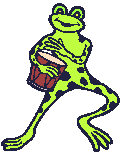
|
◊◊◊◊
Go to recipe lists at bottom of page
◊◊◊◊
|
Other tips: Tips About Reading Nutrition Labels
1. Do not expect to lose weight at a fast rate during the Phase 1 period. Your rate of loss may be slower or faster than others, but if you stick with the plan you WILL lose weight. It’s better for your health to lose slowly rather than rapidly.
2. Some diet plans are so strict during their first phase that many dieters start to feel bad. This is usually due to not eating enough good carbs (causing too-low blood sugar levels) and eating too much protein (could cause ketosis). So be sure to eat plenty of veggies and include at least one serving of fruit per day right from the start (see Phase 1 Foods to Enjoy list). This will help to keep your energy levels up, and eating fruit does NOT contribute to cravings for the "bad" carbs.
3. Never skip meals. Eat small snacks between meals. This is important to keep your blood sugar level steady. Eat three meals of reasonable portions, and have a midmorning and midafternoon snack. An after-dinner dessert or snack is optional, depending on your calorie needs and time of last meal. You shouldn’t eat at bedtime. Some say don’t eat within 2 to 3 hours before going to bed.
4. Use a smaller plate at mealtime to satisfy your psychological need to see a full plate.
5. Eat and chew slowly. Learn to stop eating before you feel full (it takes 20 minutes for the stomach to tell the brain that it's full).
6. Drink plenty of water. However, there is no set amount for everyone, as we all have different needs. The “8 glasses per day” for everyone is outdated and no longer the standard recommendation. As with diets, there is no “one-size-fits-all” amount of water to consume. See Controversies About Foods for information about how much water we need to consume and what foods and/or drinks count toward our water consumption.
7. Try to eat protein and veggies at every meal. Eat from the Foods to Enjoy list, and eat enough so that you are satisfied but not stuffed. Always remember that calories count.
8. Breakfast does not have to be eggs. There are several suggestions on this site on the Phase 1 Breakfasts page.
9. Eat beans for your protein once a day if possible. They have fiber and other nutrients that meat doesn’t have. You need 25 to 35 grams (or more) of fiber per day, and beans will help you to reach that goal. It’s easy to eat beans every day. Serve as a side dish meal, make bean chili or soup with beans, bean salads are good, and don’t forget hummus and other bean dips.
10. Get rid of the unhealthy foods. It might not be quite as simple as “out of sight, out of mind,” but it helps to not have the bad foods around. Sensible eating habits should be learned by the entire family. If you can do it, they can too!
11. Stock up on the good foods. If they’re available, and you don’t have the bad foods around, you’ll eat properly.
12. Eat real, unprocessed foods. Don't eat prepared frozen dinners. Do not eat meal replacement bars or shakes as meal replacements (but you can use them as an occasional snack or dessert).
13. Try not to, but if you do choose to eat a bad carb, eat it with a sugar-stopper (fat, fiber, protein, vinegar, or lemon). This won’t make it a good food, but it will slow down the rate of absorption of sugar so you won’t get a blood sugar spike.
14. Take a “good” multivitamin/mineral supplement every day. And according to your needs and health, other supplements might be useful to take. It's better, though, to take whole food supplements.
15. If you have a craving, it might help to drink a big glass of water, and maybe eat an appropriate snack.
16. Weigh yourself on a regular schedule, but don’t become a slave to your scale. Daily weigh-ins can be discouraging, as everyone’s weight fluctuates from day to day due to water retention and other factors. Some people with congestive heart failure need to weigh daily to be sure they aren’t retaining too much water. The best time to weigh is first thing in the morning, after emptying the bladder, and without clothes.
This page on-line September 25, 2003
|
